She died in 1884 well before the criminal dethronement of her hanai/ adopted sister Queen Liliuokalani in 1893.
Bernice Pauahi Bishop also had siblings named Kalola, Kaluaikau, and Alapai (brother).
Her story is one of Conspiracy(ies)……. she was NOT the last of the Kamehameha's.
Our ancestor Kalola was documented as her next-of-kin in her Probate.
Her husband Charles Reed Bishop, a banker, plantation owner, was a J.P. Morgan banker who had only a LIFE Interest...…
Interestingly, our great grandmother maintained that she was half white/hapa haole which is validated in a NEW YORK TIMES article:
Hawaiian Palace for a Public School, Published on August 4, 1895 also there's a family who holds a published book showing that the real Bernice Pauahi died at age 16 and was replaced by a half white neighbor child...………….issues of Fraud, deceit, deception is at hand and criminal ramifications are ongoing.
sincerely,
A Royal person - Amelia Gora - descendant of Kalola her next of kin
Reference: http://www.womenhistoryblog.com/2014/12/bernice-pauahi-bishop.html
Hawaiian Princess and Philanthropist
Princess Bernice Pauahi Bishop was a Hawaiian princess and the last direct descendant of the Royal House of Kamehameha. She is also remembered as one of the most remarkable philanthropists in the history of the Islands. Her bequest endowed the Kamehameha Schools, which specializes in educating the children of native Hawaiians.
Early Years
Pauahi Paki was born December 19, 1831 in Honolulu, Hawaii, to high chiefs Abner Paki and Laura Konia Paki. She was the great-granddaughter of Kamehameha I, the warrior chief who united the Hawaiian islands under his rule in 1810. Pauahi was reared with strong Hawaiian values and a bicultural education. She was gifted in music, and known for her generosity and kindness.
At the age of seven, she was sent to the Royal School, which was run by a pair of married Protestant missionaries, the school was committed to providing the children with the finest possible course of Western education. Miss Bernice was an excellent student, excelling in both academics and etiquette.
Pauahi Paki was born December 19, 1831 in Honolulu, Hawaii, to high chiefs Abner Paki and Laura Konia Paki. She was the great-granddaughter of Kamehameha I, the warrior chief who united the Hawaiian islands under his rule in 1810. Pauahi was reared with strong Hawaiian values and a bicultural education. She was gifted in music, and known for her generosity and kindness.
At the age of seven, she was sent to the Royal School, which was run by a pair of married Protestant missionaries, the school was committed to providing the children with the finest possible course of Western education. Miss Bernice was an excellent student, excelling in both academics and etiquette.
Charles Reed Bishop
Born January 25, 1822 in Glens Falls, New York, Charles Reed Bishop grew up on his grandfather’s 120-acre farm learning to care for sheep, cattle and horses and repairing wagons, buggies and stage coaches. He attended seventh and eighth grades at Glens Falls Academy, which completed his formal education, then worked in mercantile establishments clerking; bartering, bookkeeping, inventorying and running a lumber yard and farm.
Born January 25, 1822 in Glens Falls, New York, Charles Reed Bishop grew up on his grandfather’s 120-acre farm learning to care for sheep, cattle and horses and repairing wagons, buggies and stage coaches. He attended seventh and eighth grades at Glens Falls Academy, which completed his formal education, then worked in mercantile establishments clerking; bartering, bookkeeping, inventorying and running a lumber yard and farm.
By January of 1846, Bishop and a friend, William Little Lee, planned to travel to Oregon, Lee to practice law, and Bishop to survey land. After a rough passage through Cape Horn, the ship put in at Honolulu for provisions. Bishop decided to wait out the winter in the Islands. The 24-year-old clerk found work with local Yankee merchants, soon becoming a clerk at the U.S. consulate.
He met Pauahi and soon began regularly calling on her at the Royal School. Though her family firmly reminded her of her obligation to marry Hawaiian royalty, Pauahi resisted. In June 1850, in a small ceremony which her parents refused to attend, Pauahi became Bernice P. Bishop.
Bishop easily found work, first at Ladd and Company, a mercantile and trading establishment, then at the U.S. Consulate in Honolulu. In 1849, Bishop signed an oath to “support the Constitution and Laws of the Hawaiian Islands” and was appointed collector of customs for the kingdom.
Pauahi and Charles
Bernice Pauahi met Bishop at the Royal School where she was a student, and he soon began regularly calling on her at school. Though her family firmly reminded her of her obligation to marry Hawaiian royalty, Pauahi resisted. On June 4, 1850, in a small ceremony which her parents refused to attend, she became Bernice Pauahi Bishop.
Bernice Pauahi met Bishop at the Royal School where she was a student, and he soon began regularly calling on her at school. Though her family firmly reminded her of her obligation to marry Hawaiian royalty, Pauahi resisted. On June 4, 1850, in a small ceremony which her parents refused to attend, she became Bernice Pauahi Bishop.
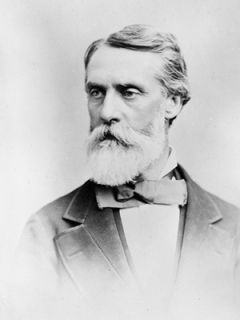
Image: Charles Reed Bishop
Their home, Haleakala, became the “greatest centre of hospitality in Honolulu.” They graciously hosted royalty, visiting dignitaries, friends and neighbors as well as engaged in civic activities such as organizing aid to the sick and destitute and providing clothing for the poor.
They were very compatible and greatly interested in each other’s endeavors. Their only marital disappointment was not having children. Bishop’s letters reveal a deep respect and love for his wife. She was the major source of his happiness throughout their 34–year marriage. Soon after her death in 1884 he wrote:
I know you all loved her, for nobody could know her at all well and not love her. For myself I will only say that I am trying to bear my loss and my loneliness as reasonably as I can, looking forward hopefully to the time when I shall find my loved one again.
Pauahi reconciled with her family within a year, and by 1857 had inherited from them an estate totaling 16,011 acres. With it came a wide range of responsibilities. Throughout her mid-20s, she served as a traditional Hawaiian philanthropist, offering guidance, support and assistance to those who approached her. She spent many working hours in her garden, taking visits from fellow islanders and helping them work through their problems in her native Hawaiian tongue.
Philanthropic Works
Pauahi was a leader in several American charitable organizations, including the Stranger’s Friend Society, which aided sick travelers, and the Women’s Sewing Society, which provided clothing for the poor. An accomplished contralto singer and pianist, Pauahi performed with the Amateur Musical Society, and gave music lessons at the Royal School. A devout Protestant, she also taught Sunday school.
Pauahi was a leader in several American charitable organizations, including the Stranger’s Friend Society, which aided sick travelers, and the Women’s Sewing Society, which provided clothing for the poor. An accomplished contralto singer and pianist, Pauahi performed with the Amateur Musical Society, and gave music lessons at the Royal School. A devout Protestant, she also taught Sunday school.
Charles Reed Bishop became a successful businessman, banker and philanthropist. In 1858 he founded Bishop and Company, which is now First Hawaiian Bank, the oldest and largest bank in the state. With his savvy financial business sense, he became one of the wealthiest men in Hawaii from banking, agriculture, real estate and other investments, and he served several Hawaiian Kings in a variety of positions, including foreign minister.
Charles became a pillar in the kingdom government. He was made a lifetime member of the House of Nobles, joined the Privy Council, became Collector General of Customs and helped organize the Royal Hawaiian Agricultural Society. He also sat on the boards of many charities and donated generously to many hospitals, churches, schools and social welfare organizations.
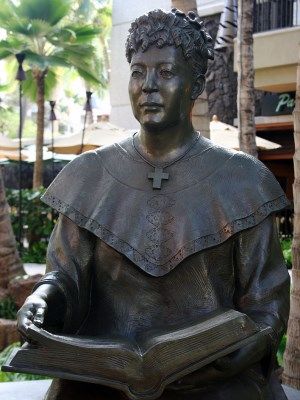
Image: Monument to Bernice Pauahi Bishop
Honolulu, Hawaii
Created by Kamehameha Schools graduate Sean Kekamakpaa Kanohiokalani Lee Loy Browne
Honolulu, Hawaii
Created by Kamehameha Schools graduate Sean Kekamakpaa Kanohiokalani Lee Loy Browne
As the last royal descendant of the Kamehameha line, Pauahi inherited thousands of acres of land, much of it from the estate of her cousin Princess Ruth Keelikolani. Her inheritance, about nine percent of the island chain’s total acreage, made Pauahi the largest landholder in the kingdom. With no children of their own, Pauahi and Charles shared a deep commitment to the well-being of Hawaiian children.
The Native Hawaiian population had numbered about 124,000 when Pauahi was born. Throughout her life, she witnessed the rapid decline of the native population due to foreign diseases, and the loss of the Hawaiian language, culture and traditions. When Pauahi wrote her will in 1883, only 44,000 Hawaiians remained. She believed that education would offer her people hope and a future.
Bernice Pauahi Bishop died October 16, 1884 of breast cancer.
Kamehameha Schools
In her will, Bernice Pauahi Bishop directed that the great bulk of her estate – approximately 378,569 acres of land – be held in trust “to erect and maintain in the Hawaiian Islands two schools, each for boarding and day scholars, one for boys and one for girls, to be known as, and called the Kamehameha Schools.” She also stipulated that preference should be given to Hawaiians of pure or part aboriginal blood.
In her will, Bernice Pauahi Bishop directed that the great bulk of her estate – approximately 378,569 acres of land – be held in trust “to erect and maintain in the Hawaiian Islands two schools, each for boarding and day scholars, one for boys and one for girls, to be known as, and called the Kamehameha Schools.” She also stipulated that preference should be given to Hawaiians of pure or part aboriginal blood.
Immediately after Pauahi’s death, Charles Reed Bishop began the process of fulfilling her wish. Established in 1887 as an all-boys school on the grounds of the current Bernice Pauahi Bishop Museum, Kamehameha opened its girls’ school in 1894. It was designed to provide students from preschool through grade 12 with a college-prep education in the English language, enhanced by Hawaiian culture, language and practices.
Kamehameha Schools, formerly called Kamehameha Schools Bishop Estate (KSBE), is a private school system established by the Bernice Pauhi Bishop Estate. It operates 31 preschools statewide and three grade K–12 campuses. Because Pauahi’s estate was land rich and cash poor, Charles contributed his own funds for the construction of several of the schools’ first buildings. He also deeded back to her estate all the lands that she had given to him in her will.
Charles also founded the Bernice Pauahi Bishop Museum in 1889 as an enduring memorial to his wife. Pauahi had inherited many irreplaceable heirlooms from her parents and her cousin Ruth Keelikolani. Queen Emma also willed her priceless antiquities to Bishop who turned her collection over to the museum. Bishop himself added many more collections by “means of negotiation, trade, gift, and purchase” from all around the world. In a 1911 letter to Samuel Damon, Charles wrote:
…Being interested in her plans and wishes and because of her very generous gifts to me… I decided to carry out her wishes regarding the schools and promised to do something toward a museum of Hawaiian and other Polynesian objects… in order to accomplish something quickly without sacrifice or embarrassment of her estate, I soon reconveyed to her estate the life interests given by her will and added a considerable amount of my own property on Oahu, Hawaii and Molokai…
Although Charles Reed Bishop relocated to San Francisco, California in 1894, he communicated with Kamehameha trustees on school policy, finance, admissions, Founder’s Day and other matters. Through correspondence, he continued to guide her trustees in directions that reinforced her vision of a perpetual educational institution until his death, June 7, 1915.
In accordance with Bishop’s expressed wish, his ashes were returned to Hawaii and interred in the Kamehameha Tomb at Mauna ‘Ala by the side of his wife. Bishop was the driving force that brought his wife’s wishes to fruition and a very important and well respected citizen of the Hawaiian Kingdom in his own right.
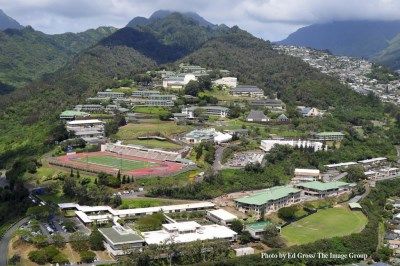
Image: Kamehameha Schools Kapalama campus on Oahu
Pauahi’s endowment supports Kamehameha Schools, which has grown into a statewide educational system serving more than 47,000 students annually at 30 preschool sites; K-12 campuses on Hawaii, Maui and Oahu; and through a broad range of community outreach programs. When she died in 1884, her estate comprised some 375,500 acres of land assessed at about $474,000. Today, it includes nearly 365,800 acres of Hawaii land and combined with other assets is valued at more than $9 billion.
SOURCES
Kamehameha Schools: About Pauahi
Kamehameha Schools: Charles Reed Bishop
Philanthropy Roundtable: Bernice Pauahi Bishop
Charles Reed Bishop: The Man Behind the Mission
********************Kamehameha Schools: About Pauahi
Kamehameha Schools: Charles Reed Bishop
Philanthropy Roundtable: Bernice Pauahi Bishop
Charles Reed Bishop: The Man Behind the Mission
facebook:

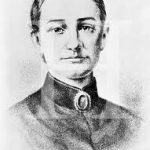
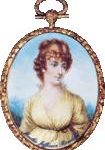
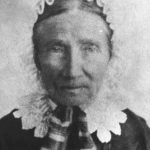
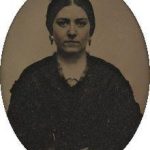
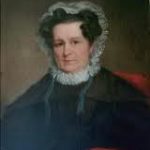
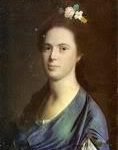


No comments:
Post a Comment